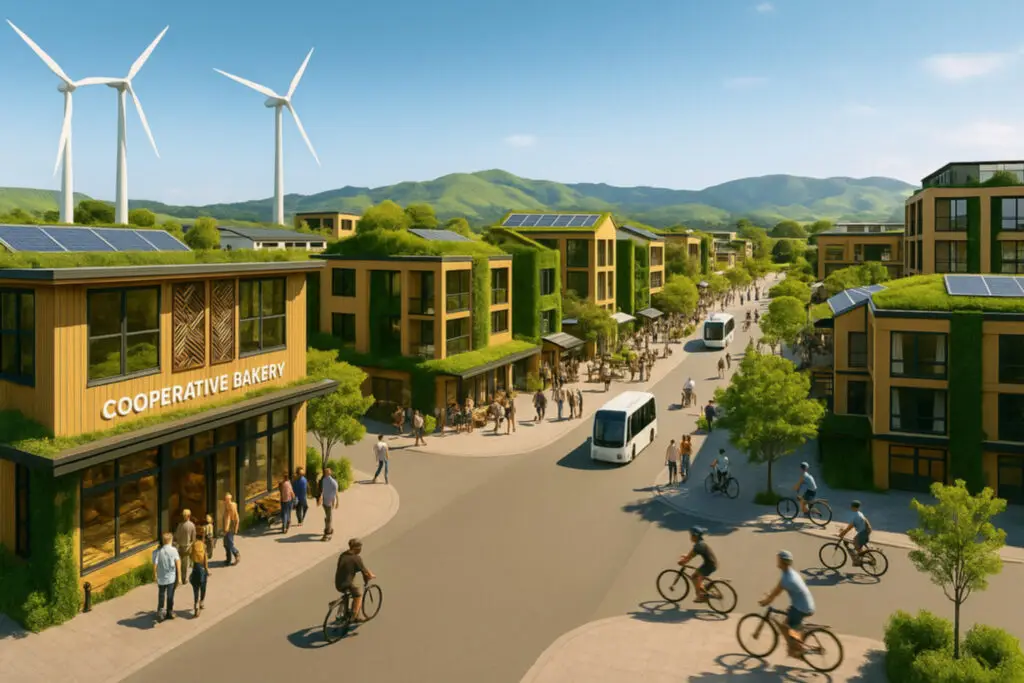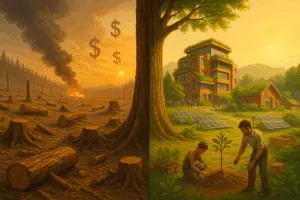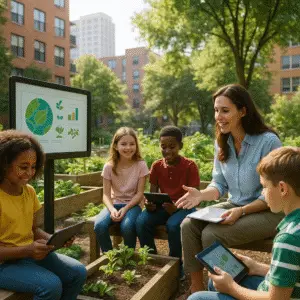Global Insights Green Tech

Global Insights Green Tech Infrastructure research reveals that urban sustainability advances fastest when cities treat climate solutions as shared intellectual capital rather than proprietary assets. The cross-regional exchange, for instance, of green infrastructure policies—from Copenhagen’s storm-water “sponge” parks to Vancouver’s low-carbon mobility—lets planners skip trial-and-error and move directly to scalable, proven interventions. Yet every transfer still requires subsequently local calibration for climate, governance, and equity.
Global knowledge networks and leading Eco-cities Global Insights Green Tech
Formal city-to-city networks supply the backbone for knowledge diffusion. Platforms such as C40 Cities and UNEP knowledge hubs curate case studies and convene technical working groups. Three widely cited exemplars illustrate specifically how lessons migrate:
- Copenhagen, Denmark — Over 300 nature-based projects since 2011 manage cloudburst floods and cut neighborhood heat by 21 %. Tree-lined retention streets now inspire “sponge city” retrofits in New York and Auckland.
- Vancouver, Canada — Emissions fell meanwhile 12 % between 2007 – 2023 while GDP rose 29 %. Policies blend active transport targets (two-thirds of trips by walk, bike, or transit) with zero-emission building standards.
- Melbourne, Australia — A 100 % renewable-energy goal for 2030, urban-forest canopy expansion, and neighborhood batteries support climate neutrality pledges aligned with the Paris Agreement.
Transnational initiatives, finance, and “glocal” adaptation
The EU Green Deal, the mission for 100 climate-neutral cities by 2030, and UN-Habitat’s New Urban Agenda demonstrate ultimately how supranational frameworks fund and standardize green infrastructure. City diplomacy converts those resources into action:
- Policy alignment — Nearly all C40 members now publish Paris-aligned climate action plans.
- Finance innovation — Public-private partnerships, municipal green bonds, and World-Bank urban loans (≈ US$ 6 bn yr-1) help bridge the US$ 4.5–5.4 tn annual infrastructure gap.
- Contextual tailoring — Exchanges such as Melbourne-Daegu (2024) show that industrial coal-dependent regions adjust imported renewable-energy playbooks to local economic structures.
Equity, unintended impacts, and corrective design Global Insights Green Tech
In short global models risk social backlash when equity is sidelined. “Green gentrification” in projects like New York’s High Line raised nearby rents and displaced low-income residents. Emerging in conclusion safeguards include:
- Inclusive zoning or rent-stabilization near new parks.
- Mandatory community co-design phases consequently to surface local priorities.
- Dedicated revenue from carbon or congestion pricing funneled into affordable housing and transit.
Equality-focused guidance from the World Resources Institute and C40 now accompanies every major toolkit, ensuring that environmental and social performance advance afterward in tandem.
Digital futures and collective climate resilience
Artificial-intelligence “digital twins” already model micro-climate risk, optimize energy grids, and share outputs via open-source portals consequently, accelerating replication across continents. Upcoming milestones—the IPCC Special Report on Cities and COP29—are expected to codify minimum performance standards for green roofs, permeable pavements, and zero-emission vehicles, reinforcing the shift from competitive branding (“world’s greenest city”) toward interdependent resilience.
Next steps — practitioner action: audit local climate hazards ultimately, query global case-study databases, and co-design pilot projects with affected communities.
Technical

Short Long Term Profit Tech
Short Long Term Profit Tech describes the gap between rapid gains and durable value; closing that gap is central to sound policy, finance, and corporate strategy. Infrastructure: the cost of deferred upkeep Short Long Term Profit Tech The 2007 collapse of Minneapolis’s I-35W bridge shows how chasing short-term savings can

Education Strategies Tech
Education Strategies Tech in Sustainable Development Education strategies tech plays a central role in driving sustainable development in Australia. As communities face urgent climate and ecological challenges, educational efforts ensure that people are both informed and engaged. Notably, outreach is no longer confined to schools—it spans apps, public media, and
Automation Sustainable Development Tech
Automation Sustainable Development Tech Automation Sustainable Development Tech is rapidly reshaping sustainable urban development across Australia. By integrating artificial intelligence (AI), real-time data, and smart infrastructure, cities can now reduce emissions, optimise energy, and respond faster to climate threats. From Sydney’s digital twin models to Auckland’s urban tree mapping via